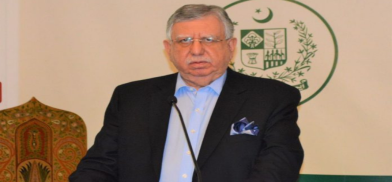Higher GDP growth to hurt Pakistan's economy, says PM adviser
Gross domestic product growth of over six percent would hurt Pakistan’s economy, said Shaukat Tareen, a special adviser on finance to Pakistan’s Prime Minister Imran Khan

Gross domestic product growth of over six percent would hurt Pakistan’s economy, said Shaukat Tareen, a special adviser on finance to Pakistan’s Prime Minister Imran Khan. The comment came a month after he admitted overheating of the economy and called for appropriate measures.
“I’d not like to see 6 percent (growth) this year. That’s going to be damaging for our economy,” Tareen, who was the country’s finance minister until recently, said during an event in Islamabad on Friday. The GDP growth, he said, would be capped between 5 -5.5 percent this year.
Tareen, who has also been leading talks with the International Monetary Fund (IMF) for the revival of its $6 billion bailout package, said the IMF program would not hurt the country’s growth target, as suspected by many. However, he added the IMF too wanted the growth to be around 5 percent.
The unsustainable high growth rate will hurt the country, he said.
To boost growth by inducing demand, the government has pumped in huge cash in form of subsidies and increased government spendings. However, the intended consequences emerged soon when the government realized the overheating in the economy, resulting in a high inflation rate.
He said that the IMF program won’t “kill growth” — a claim that’s in contrast to the typical IMF prescription involving reduced government spending and higher interest rates that slow down GDP growth. The global lender has also been stressing the government to restructure its taxes and called for increasing tariffs on electricity and fuels.
The ballooning trade deficit has become another headache for the government. In the last fiscal (FY 21, which ended in June), the trade deficit widened by 32.9 percent, posting around $30 billion difference between imports and exports. In July, the first month of the current fiscal, it was around $ 3 billion, only to increase to $4.05 billion in August.
The heavy remittances that the country receives--close to $25 billion in the last fiscal--help it manage the trade deficit. However, given the current pace, that too is likely to fall short this year.
Currently, the government has now been looking at options for external financing. Recently, Saudi Arabia deposited around $ 3 billion in Pakistan’s central bank and agreed to provide $1.5 billion worth of oil purchase on deferred payments.
(SAM)








Post a Comment